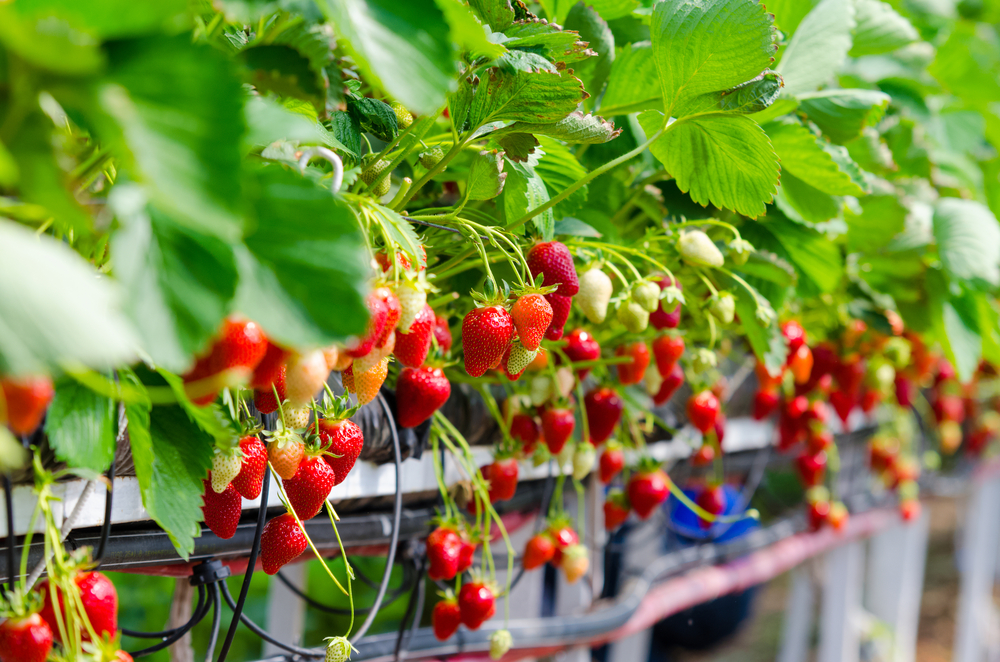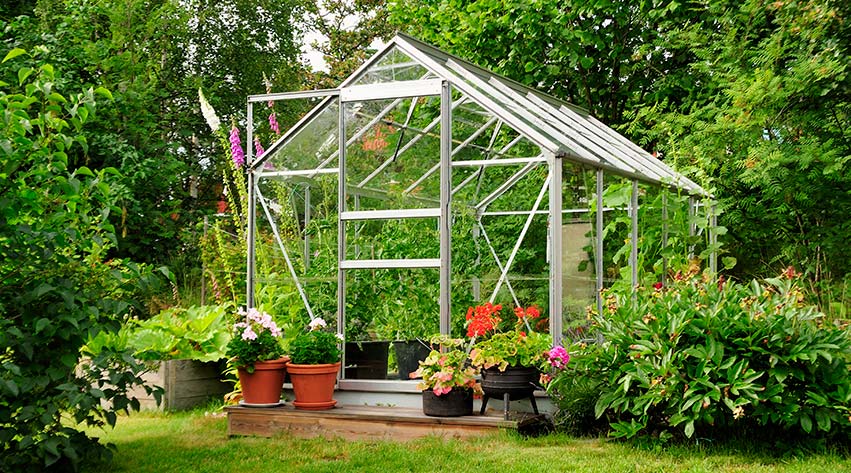Call us at 725-239-9966!
M-F: 8 AM-7 PM PST
Call us at 725-239-9966!
M-F: 8 AM-7 PM PST
Starting and running a greenhouse business can be an extremely rewarding and profitable venture. The global greenhouse horticulture market continues to expand rapidly, reaching a value of $28.3 billion in 2022 and projected to rise to $48.3 billion by 2028, exhibiting robust 9.2% growth year-over-year according to recent research by IMARC Group.
With demand for fresh, locally grown fruits, vegetables, flowers, and herbs continuing to rise, a greenhouse operation can be a viable full-time business or profitable side hustle for entrepreneurs and gardeners alike.
However, launching a profitable greenhouse business takes careful planning, preparation, and hard work. This comprehensive guide provides aspiring greenhouse entrepreneurs and growers with a complete overview of the critical steps and considerations for starting a successful and lucrative business.
Carefully research and select the ideal greenhouse structure, size, and crops to maximize profits and suit your goals, land, and climate.
Create a comprehensive business plan detailing costs, revenues, operations, marketing, and financing. This is the roadmap for success.
Obtain all required licenses, permits, and insurance before launching your greenhouse venture to stay legally compliant.
Choose a site with ample sunlight, utility access, convenience, and proper drainage and wind protection.
Implement savvy marketing tactics like niche crops, diverse sales channels, and branding to profitably sell your greenhouse harvest.

The first major decision that new greenhouse business owners face is identifying the type of greenhouse operation they want to build. Carefully considering your goals, resources, property, target market and more can help determine the ideal greenhouse style, size, and crops for your new venture.
There are several types of greenhouse structures, each with their own advantages and drawbacks:
Gable – The most common and versatile greenhouse style with a peaked roof shape, providing excellent structural stability and light penetration. Gable greenhouses are available in a variety of sizes.
Hoop House – An inexpensive, low-profile option constructed from PVC piping or metal framing covered with plastic sheeting. Hoop houses provide less temperature regulation but can be easily built.
Geodesic Dome – A dome-shaped greenhouse with triangular panels made from plastic or glass set within a network of metal struts. Geodesic domes have excellent strength and utilize space efficiently.
Glass Greenhouse – Glass panels allow maximum light transmission but have higher startup costs. Aluminum framing resists corrosion in glass greenhouses.
Plastic Greenhouse – Plastic film or rigid acrylic panels are an affordable covering option. Plastic is less durable than glass but easier to install.
The size of your greenhouse will depend on factors like budget, property space, crop output goals, and heating and ventilation requirements. Options include:
Hobby Greenhouse – Typically 100 sq ft or less, suited for backyard gardeners wanting to start seedlings or grow a few specialty crops.
Small Commercial Greenhouse – Around 1,000 sq ft, an affordable stepping stone to larger operations, allowing diverse crop cultivation.
Large Commercial Greenhouse – 5,000+ sq ft growing spaces to support major wholesale crop production. Require greater investment and land.
Select greenhouse crops based on profitability, your growing expertise, resource availability, and local market demand:
Vegetables – Greens, tomatoes, peppers, and cucumbers are common valuable greenhouse vegetables.
Herbs – Basil, cilantro, parsley, and mint offer year-round harvest potential.
Flowers – Orchids, tulips, poinsettias, snapdragons, and more for bouquets or ornamental use.
Mushrooms – High-value specialty crops that thrive in greenhouse humidity and warmth.
The ideal greenhouse climate maximizes plant growth and depends on the crops grown:
Heating – Supplemental heating extends growing seasons. Popular options are hot water pipes, and electric or gas furnaces.
Cooling – Ventilation, shade cloths, misting systems, and air conditioners can provide summer cooling.
Lighting – Supplemental lighting like LEDs can optimize light levels for photosynthesis during darker months.
Irrigation – Drip irrigation, misters, and hand-watering are common greenhouse watering methods.

After deciding on the greenhouse type and crops, the next crucial step is creating a detailed greenhouse business plan. This plan will act as an invaluable roadmap that outlines every aspect of your new enterprise.
Startup costs for a small hobby greenhouse can total around $5,000-$12,000 including the structure, equipment, and supplies.
For a commercial greenhouse business, total startup costs often range from $60,000 to over $200,000 depending on the size and features.
Ongoing operating expenses like labor, utilities, maintenance, and crop inputs average around $20,000-50,000 annually for a small commercial greenhouse.
A breakdown of typical startup costs for a commercial greenhouse is shown below:
| Item | Estimated Cost |
|---|---|
| Greenhouse Structure | $15,000-$100,000 |
| Heating and Cooling Systems | $5,000-$15,000 |
| Irrigation System | $2,000-$5,000 |
| Seeds and Transplants | $500-$2,000 |
| Soil and Containers | $1,000-$3,000 |
| Tools and Supplies | $1,000-$5,000 |
| Permits and Licenses | $500-$2,000 |
| Total | $25,000-$150,000 |
Research crop profitability and yields to estimate annual revenues based on your target production.
Popular highly valuable greenhouse crops like tomatoes, lettuce, and herbs can produce over $25 per sq ft in annual sales in optimal conditions.
Consider diversifying offerings throughout the year, like poinsettias for winter holiday sales.
Describe day-to-day workflows for planting, crop care, harvesting, processing, packaging, and managing employees if applicable.
Set pest and disease prevention strategies like using beneficial insects or organic sprays.
Establish protocols for ensuring plant quality, yield, and consistent production.
Identify your local customers like grocery stores, florists, farmers markets, restaurants, schools, etc.
Choose appropriate sales and distribution channels like wholesale, retail, CSAs, delivery, or pick-your-own.
Market niche crops for higher prices, like heirloom tomatoes, organic herbs, and edible flowers.
Calculate total start-up costs and working capital needed for the first 1-2 years of operation.
Explore financing options like small business loans, USDA grants, crowdfunding, or investor capital if your own funds are insufficient.
Before getting started, research and acquire all necessary permits, licenses, and insurance.
Contact your city or county government office to learn about zoning regulations, business licensing, and any special use permits required for a greenhouse in your location.
Liability insurance safeguards your business from unforeseen risks. Product liability insurance is critical if selling your harvest.
If hiring employees, obtain all required state and federal employer identification numbers and workers' compensation insurance.
If selling edible crops, be prepared to comply with additional health codes and food handling standards.
Additionally, some municipalities may require specific building permits or pre-approvals for certain greenhouse structures. Read our greenhouse buyer's guide to learn about any potential permitting requirements based on the type of greenhouse you plan to construct.

Choosing the right physical location for your greenhouse is critical for profitability and growing success.
Maximize available light needed for photosynthesis by selecting a south-facing site free from shade and obstructions.
Convenient access to electrical, gas (if applicable), and water utilities helps meet greenhouse needs cost-effectively.
Choose elevated, well-draining sites to prevent flooding. Avoid excessively windy areas that could damage the greenhouse structure.
Proximity to main roads, laborers, your home, and local markets reduces costs and transportation time.
Clear, level, and grade the site for installation. Construct any needed infrastructure like electrical, water, and gas lines, drainage, irrigation, and road access.

Carefully selecting which crops to grow in your greenhouse is key to profitability. Consider the following factors:
Research the preferred soil mixture, temperature range, humidity levels, and light exposure needed for each crop under consideration.
Choose plants suited for your greenhouse’s specific controlled climate conditions.
Calculate the mature size of each crop and optimum spacing for the maximum production density.
For example, tomato plants may be spaced 18-24 inches apart, while lettuce can be grown more densely.
Prioritize crops that demand higher prices like tomatoes, cucumbers, leafy greens, microgreens, herbs, berries, and flowers.
Heirloom, organic, and specialty niche crops also command premium prices.
Determine ideal timing for sowing, transplanting, cultivation, and harvesting target crops.
Plan crop selection and succession for profitable production year-round.
Study your local area to determine which crops are most sought-after and profitable to supply based on demand.
Connect with potential wholesale, retail, restaurant, or direct-to-consumer buyers.
Once your greenhouse is set up and crops are chosen, it's vital to leverage controlled greenhouse conditions to maximize plant health, quality, and yields.
Prepare growing beds with enriched soil containing compost or organic fertilizers to nourish plants.
Test soil pH and adjust to the optimum level for target crops.
Monitor and modulate factors like sunlight, ventilation, heating, and humidity levels to create the ideal microclimate.
Automate systems to ensure consistency for optimal photosynthesis and growth.
Utilize drip irrigation for water-efficient hydration straight to plant roots.
Avoid overwatering and practice judicious hydration based on crop needs.
Utilize preventive tactics like ventilation, crop rotation, beneficial insects, and organic sprays.
Identify and control diseases and pests if outbreaks occur to avoid crop losses.
Utilize vertical growing, proper spacing, and succession planting to multiply yields per square foot.
Train vining crops like tomatoes up strings for support and increased light interception.

A productive greenhouse relies on effective marketing and sales. Consider these tips for selling your greenhouse bounty:
Set yourself apart by delivering ultra-fresh produce and exemplary service.
Implement careful post-harvest handling procedures to maintain pristine quality.
Highlight unique or niche crops, specialized growing methods, sustainability practices, or product origin.
Share your farm’s story and processes directly with customers to build engagement.
Sell to restaurants, florists, grocers, farmers markets, food hubs, schools, etc.
Offer CSAs, subscriptions, online ordering, and delivery services.
Operate a farm stand or u-pick operation if allowed by your site.
Create a logo, packaging, labels, and other branding assets that reflect your business’ identity and quality.
Claim your greenhouse’s name on social media, Google My Business, and other online directories.
Network with other local growers rather than compete – cross-promotion can benefit all parties.
Run targeted digital, print, radio, television, billboard, and social media campaigns.
Participate in local events, trade shows, and farmers' markets to engage directly with your community.

Like any business, diligent financial management is vital for greenhouse profitability.
Accurately track all expenses and sales revenues in bookkeeping software or spreadsheets.
Monitor net profit margins over time and per crop. Look for ways to increase efficiency and cut unnecessary costs.
Research and establish optimal pricing for your products based on input costs, demand, and competitor pricing.
Record accounts receivable from clients if selling wholesale. Follow up on late payments promptly.
Plan seasonal fluctuations into cash flow forecasts. Have emergency funds available to handle lean periods.
Analyze financial statements annually to assess performance. Make any necessary changes to boost profitability.

Starting a thriving and lucrative greenhouse business takes significant work initially, but the rewards for growers in terms of profits, lifestyle, and community impact make the effort well worth it. Follow this guide to conduct in-depth planning, establish efficient growing processes, manage finances diligently, market skillfully, and operate a best-in-class greenhouse. With dedication and persistence, your greenhouse can grow into a highly sustainable and profitable full-time enterprise.
Some of the most profitable fruits and vegetables grown in greenhouses include tomatoes, lettuce, cucumbers, peppers, herbs, microgreens, leafy greens, berries, and edible flowers. Focus on growing high-value, niche crops that demand premium prices.
Options to earn extra part-time income include selling produce at farmers' markets and farm stands, offering a small CSA, growing microgreens or potted herbs to sell to restaurants and florists, and selling at local stores on consignment. Start small and scale up over time.
Yes, there are plenty of such apps, and using an online business name generator can help spark creative ideas and available names for your venture. Try tool like Shopify’s Business Name Generator to experiment with keyword-rich, catchy names and check domain availability. Ultimately your name should reflect your brand identity.
The team you need to hire will depend on the types of crops you grow and the scale of your greenhouse operation. Larger wholesale ventures may need growers, harvesters, and delivery drivers. Smaller operations could utilize family and part-time staff. Seek employees passionate about your mission. Outsource specialized tasks like marketing and accounting.
The best sales channels will maintain a consistent revenue stream while maximizing your prices and profits. Options include selling at farmers' markets, farm stands, CSAs, stores, restaurants, floral shops, online, and wholesale to local markets. Diversify your sales outlets based on crops, production volume, and location.

{"one"=>"Select 2 or 3 items to compare", "other"=>"{{ count }} of 3 items selected"}
Comments
Leave a comment